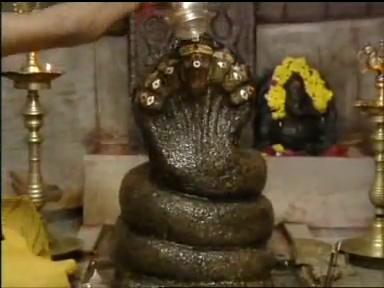Padangusthasana (single toe balance pose) |  |
 | |  |
 | Padangustha - Big toe
In this asana, the practitioner is squatting on the ground on only one leg. Ideally, the entire body weight is bore by only the big toe of the foot that is on the ground, hence the name.
|  |
 | Taking the asana positionInitial Position - Sitting position
| 1. | From sitting position, bring the feet in, close to the body, and come onto the toes. |
| 2. | Lift the left foot up and place it on the right thigh. Make sure that the right thigh is parallel to the ground. Adjust the right heel so that it presses against the perineum. The entire body weight is now borne by the toes and ball of the right foot. |
|
| 3. | Once balance is achieved, bring the hands to the front of the chest in namaskar. |
|  |
 | The asana positionIn this asana, the body is balanced only on the balls and toes of the right foot, with the left foot resting on the right thigh. The hands are in namaskar position in front of the chest.
|  |
 | Releasing the asana position
| 1. | Release the hands from namaskar pose and place them on the ground near the body. |
| 2. | Release the left leg and place the left foot next to the right. |
| 3. | Straighten out the legs with the help of both hands and come back into sitting position. |
|
Repeat on the asana on the other side by placing the right foot on the left thigh.
|  |
 | Anatomical focus |  |
 | AwarenessOn maintaining balance by focusing on a fixed point.
|  |
 | Do's
| 1. | Keep the spine erect. |
| 2. | Keep the right heel pressing on the perineum. |
| 3. | Keep the right thigh parallel to the floor. |
| 4. | Move slowly in and out of the posture to maintain balance. |
| 5. | Use the strength of the ankle and leg to maintain balance and minimize movement while in the pose. |
|  |
 | Dont's
| 1. | Move the body about too much to maintain balance. |
| 2. | Hold the breath while in the posture. |
|  |
 | Benefits
| 1. | Strengthens the legs, especially the ankles and toes. |
| 2. | Regulates the reproductive system. |
| 3. | Prevents spermatorrhea. |
| 4. | Promotes brahmacharya. |
| 5. | Trains the nervous system. |
|  |
 | Therapeutic application |  |
 | Precautions & contra-indications |  |
 | DurationAt least 15 seconds so as to experience the benefits of the asana. With daily practice, the duration can be extended up to 1 minute.
|  |
 | Variations & tipsIf it is difficult to maintain balance initially, the hands may be placed on the ground for support. Once some degree of stability is achieved, release one hand from the ground and hold it in half-namaskar position in front of the chest and gradually, release the other hand and complete the namaskar position in front of the chest.
|  |
 | Preparatory poses
| 1. | Preparatory movement 10 |
| 2. | Utkatasana |
|  |
 | Follow-up poses |  |
 | Ancient texts |  |
 | |



కామెంట్లు లేవు:
కామెంట్ను పోస్ట్ చేయండి